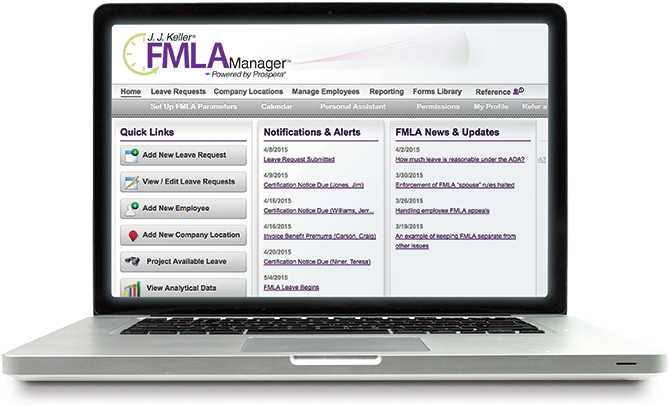FMLA Articles
Employees don’t decide whether to use FMLA leave
DOL says employers decide Employees often have accrued paid time off available when they need FMLA leave, but many employers begin counting the leave as FMLA leave only after an employee exhausts the accrued paid time off. In its latest opinion letter, the U.S. Department of Labor (DOL) addressed the question of whether employers may (or should) voluntarily allow employees to exhaust some or all available accrued paid time off before designating leave as FMLA leave, even when the leave clearly qualifies for FMLA protections. In short, the DOL indicates that employers may not delay the designation of FMLA-qualifying leave; nor may they designate more than 12 (or 26) weeks of leave as FMLA leave. Reasoning behind the opinion A number of aspects of the FMLA support the DOL’s reasoning, including the following: Once an eligible employee puts you on notice of the need for leave, neither the employee nor you (the employer) may decline FMLA protection for that leave. Employees may not waive, nor may employers induce employees to waive, their prospective rights under the FMLA. Employees also may not choose whether an employee’s FMLA-qualifying absence is protected or not; it is always the employer’s responsibility for determining whether an absence qualifies for FMLA protections, and to designate it as such. When you determine that leave is for an FMLA-qualifying reason, the leave is FMLA-protected and counts toward the employee’s 12-week FMLA leave entitlement. Once you have enough information to make this determination, you must, absent extenuating circumstances, provide notice of the designation within five business days. Therefore, you may not delay designating leave as FMLA-qualifying, even if the employee would prefer that you delay the designation. In this point, the DOL disagrees with the Ninth Circuit’s holding that an employee may decline to use FMLA leave to save it for future use. You are also prohibited from designating more than 12 (or 26) weeks of leave as FMLA leave. While an employee may take more than 12 (or 26) weeks of leave, only 12 (or 26) weeks would be FMLA leave. You may not designate the extra leave as FMLA leave. If an employee uses paid leave for otherwise unpaid FMLA leave, the employee’s paid leave counts toward his or her 12- (or 26)-week FMLA leave entitlement. Some employers may be relying on a provision in the FMLA regulations (§825.700), that indicates that “[a]n employer must observe any employment benefit or program that provides greater family and medical leave rights to employees than the rights provided by the FMLA.” Providing such additional leave, however, cannot expand the employee’s FMLA leave entitlement. Therefore, when an employee indicates that he or she would rather not “use” FMLA for a reason that qualifies for FMLA protection, you are generally expected to designate it as such, anyway. You may explain to the employee that it is your responsibility, and you are complying with the law. This article was written by Darlene M. Clabault, SHRM-CP, PHR, CLMS, of J. J. Keller & Associates, Inc. The content of these news items, in whole or in part, MAY NOT be copied into any other uses without consulting the originator of the content.
You may also enjoy the following articles:

The J. J. Keller FMLA Manager service is your business resource for tracking employee leave and ensuring compliance with the latest Federal and State FMLA requirements.